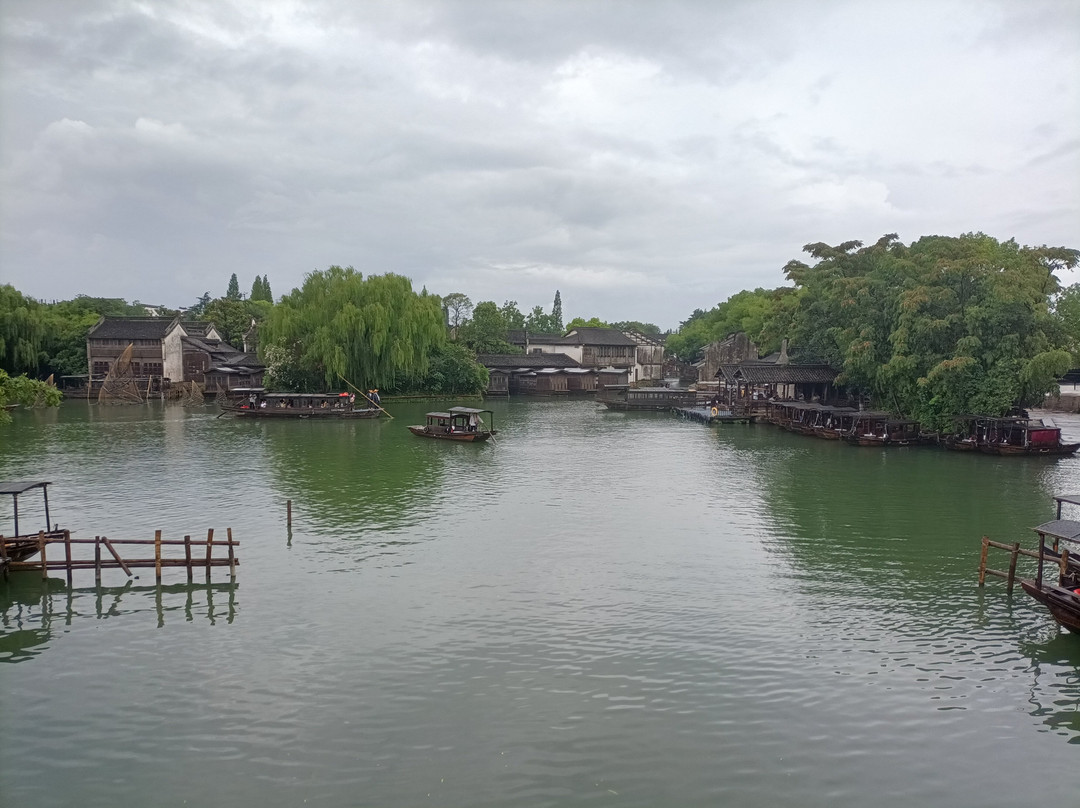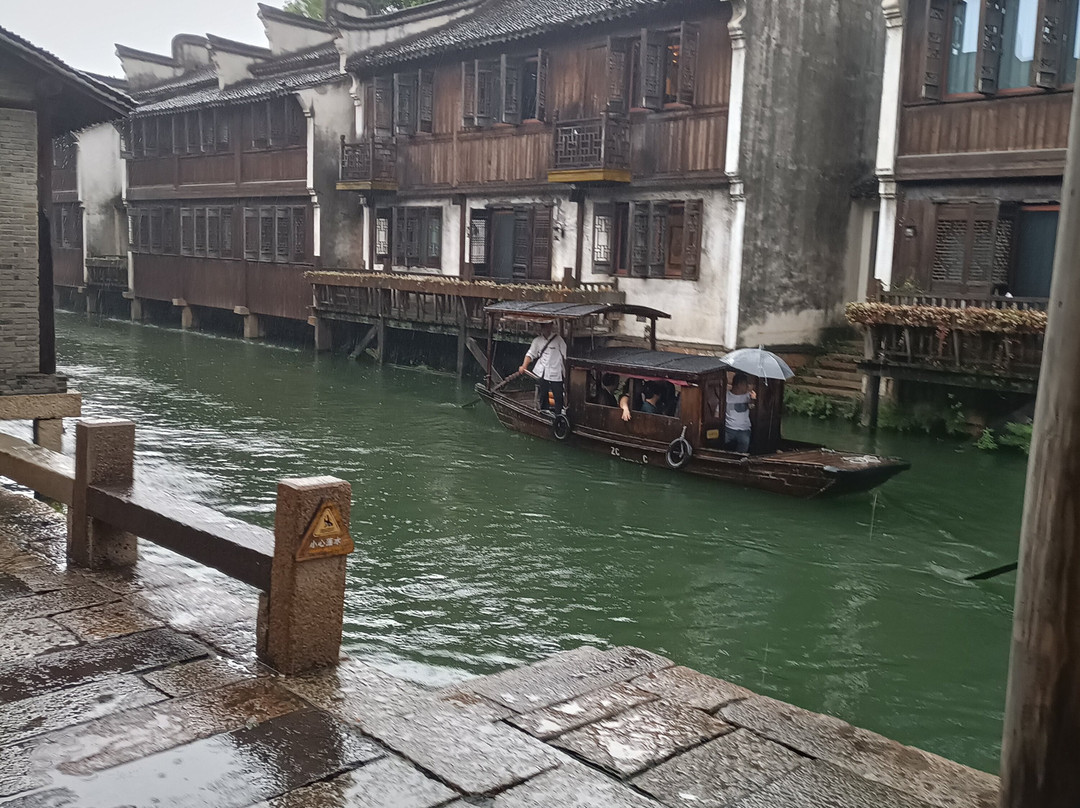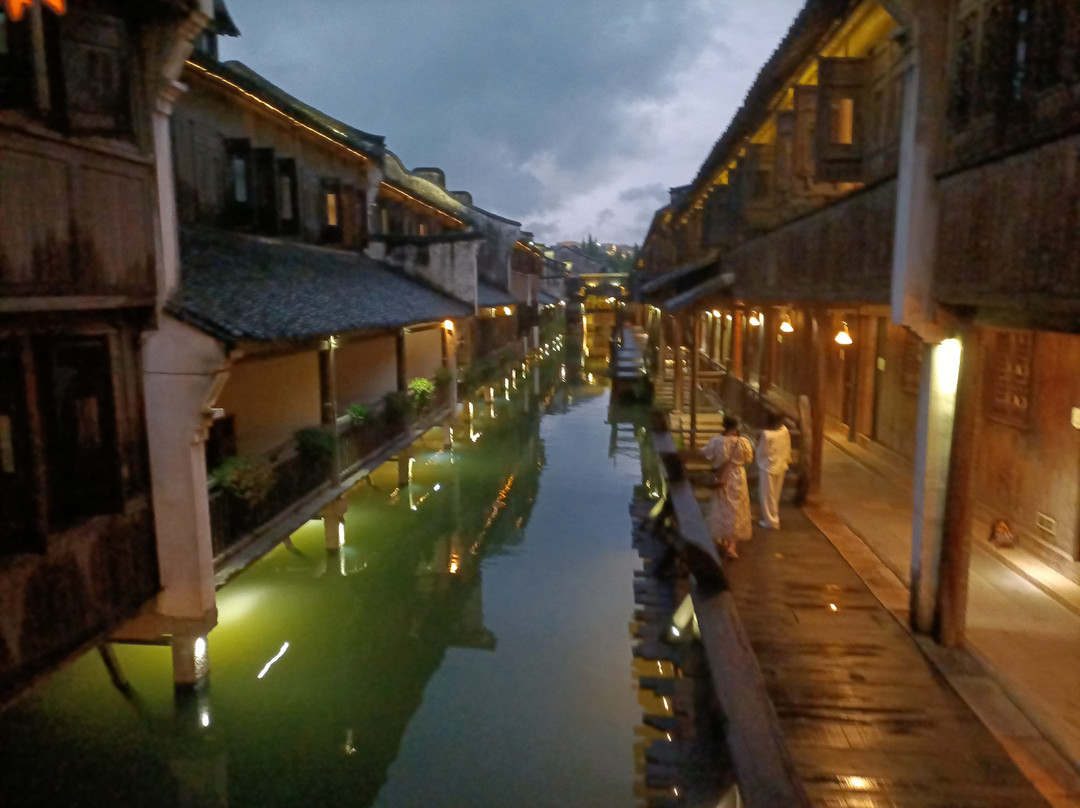的点评
Despite overtourism, Xi Za (West Wuzhen) retains its power to seduce.
西栅的点评
点评:To fully understand the meaning of the ancient city of Wuzhen, one viable route is to refer to the UNESCO document, inscribing this city in the group of "The Ancient Waterfront Towns in the South of the Yangtze River". The document clearly illustrates the conditions, in the Yangtze Valley, of a population dating back 7,000 years BP, and the early prosperity of this group of cities, favored since their founding era (in the case of Wuzhen, a fortress existed here as early as the 9th century AD) by the fertility of the soil, the early use of water for both agriculture and transportation, essentially by the regional prosperity fostered by the symbiosis with water.
Xi Za, the western part of the ancient city of Wuzhen, demonstrates the recent outcome of these historical processes. Passed down to us in the form it acquired at the end of the Ming Dynasty and especially during the Qing Dynasty, it clearly documents the settlement's amphibious conditions on the one hand (with the imposing landmark of the Grand Canal at its western end), and the diverse range of Wuzhen's urban functions on the other: not only housing and commerce, but also manufacturing activities, such as the Yichang Foundry and the silk and pottery workshops.
Today, all of this has been transformed by tourism, or rather, overtourism: restaurants abound, there are numerous specialized museums, and the canals are crowded with pleasure boats.
But despite this, Xi Za (West Wuzhen) still retains its power to seduce.
Xi Za, the western part of the ancient city of Wuzhen, demonstrates the recent outcome of these historical processes. Passed down to us in the form it acquired at the end of the Ming Dynasty and especially during the Qing Dynasty, it clearly documents the settlement's amphibious conditions on the one hand (with the imposing landmark of the Grand Canal at its western end), and the diverse range of Wuzhen's urban functions on the other: not only housing and commerce, but also manufacturing activities, such as the Yichang Foundry and the silk and pottery workshops.
Today, all of this has been transformed by tourism, or rather, overtourism: restaurants abound, there are numerous specialized museums, and the canals are crowded with pleasure boats.
But despite this, Xi Za (West Wuzhen) still retains its power to seduce.
翻译:要充分理解乌镇古城的意义,一条可行的途径是参考联合国教科文组织的文件,该文件将乌镇列入“江南水乡古镇”之列。该文件清晰地展现了长江流域早在7000年前就已存在的人口状况,以及这片城市群早期的繁荣。这些城市自建城之初(例如,乌镇早在公元9世纪就建有要塞)就得益于肥沃的土壤、早期利用水资源进行农业和交通运输,而水与水的共生关系则孕育了区域繁荣。
乌镇古城西部的西杂镇,则展现了这些历史进程的近期成果。它以明末清初的形式流传至今,清晰地记录了乌镇聚落的两栖条件(西端是雄伟的地标——大运河),以及乌镇多样化的城市功能:不仅有住房和商业,还有制造业,例如宜昌铸造厂以及丝绸和陶艺作坊。
如今,这一切都因旅游业,或者更确切地说是过度旅游而发生了改变:餐馆比比皆是,专业博物馆不计其数,运河上挤满了游船。
但尽管如此,西乌镇依然保持着其魅力。
乌镇古城西部的西杂镇,则展现了这些历史进程的近期成果。它以明末清初的形式流传至今,清晰地记录了乌镇聚落的两栖条件(西端是雄伟的地标——大运河),以及乌镇多样化的城市功能:不仅有住房和商业,还有制造业,例如宜昌铸造厂以及丝绸和陶艺作坊。
如今,这一切都因旅游业,或者更确切地说是过度旅游而发生了改变:餐馆比比皆是,专业博物馆不计其数,运河上挤满了游船。
但尽管如此,西乌镇依然保持着其魅力。



此点评仅代表旅行者个人的主观意见,并不代表TripAdvisor以及其合作方的意见。
关于我们
|
新闻动态
|
商务合作
|
会员中心
|
业主中心
|
业主通
|
常见问题
|
意见反馈
|
联系我们
|
营业执照
© 2025 Tripadvisor 版权所有。
使用条款 |隐私政策 |网站工作原理
部分照片由 VFM Leonardo 提供。
* Tripadvisor不是旅行社,也不是旅游预订服务代理商。我们提供免费、客观、公正的旅游资讯服务。 (显示更多)
TripAdvisor LLC 既不是预订代理商,也不是旅游运营商,不会向网站用户收取任何服务费。 按照规定,在 Tripadvisor 发布机票价格、游览和旅行套餐的合作伙伴(航空公司、旅行提供商及预订代理商),其标价须包含所有费用和附加费用。 例如, 机场出入境税费、消费税与其他服务费、手续费、杂费及附加费用。 当您向我们的某个合作伙伴进行预订时,请务必查阅他们的网站以了解当地行政部门要求的所有适用费用的具体情况。 除非另有说明,机票价格通常指的是一个人的价格(以人民币计)。
为方便起见,TripAdvisor LLC 根据从我们的预订合作伙伴获取的空房率计算每个酒店的均价。 对于游览和景点来说,所显示价格通常是每位成人的最低可用价格。 对于列出的任何旅行套餐或优惠,TripAdvisor LLC 无法保证任何特定的费率或价格。 此外,酒店均价每晚会更新,并以您的首选币种表示(使用现行汇率)。 由于这些已换算的价格是预估价格,因此,有关具体金额和币种请与预订网站进行核实。
此外,TripAdvisor LLC 无法保证我们网站上宣传的价格随时有效。 标价可能需要预订一定天数才能生效,或有不可用日期、使用条件或限制。
TripAdvisor公司对外部网站的内容一概不负责。优惠价格中不含税和其他费用。
ICP证:沪B2-20200433
沪ICP备20013175号
 沪公网安备31010502005427号
沪公网安备31010502005427号鹰程信息技术(上海)有限公司
货币/国家及地区
¥CNY
中国

